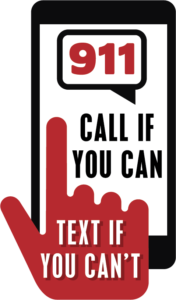Kyle Wastewater Treatment Plant Suffers Significant Component Failure
Updated November 29, 2017 1:40 p.m.
Update on what’s happening at Kyle’s waste water treatment plant: city staff are encouraged by the efforts of the pumping system they installed yesterday. “What we hoped would happen is starting,” said Division Manager Treatment Operations Jason Biemer. “Our staff continue to monitor conditions in the immediate area and downstream of the plant.”
Update from City of Kyle November 28 11:25am:
Kyle Waste Water Treatment Plant Crews Making Progress
Kyle wastewater treatment plant staff will install a pump system at Plant 1 this afternoon that will mimic the function of the center well system following a mechanical failure Sunday.
“A crew is bringing in the pump from Houston,” Division Manager Jason Biemer said this morning. “Our goal is to have the pump up and running by this evening.”
Biemer also said a new replacement part for the center well was located and a contractor will verify its compatibility with our existing structure.
“We anticipate having the components replaced and plant operations fully restored over the course of about a month,” Biemer said.
Per the City of Kyle’s Website November 27, 2017 @ 5:15pm:
The center well bearing system at the Kyle Waste Water Treatment Plant 1 suffered a significant component failure on Sunday, Nov. 26. The bearing system is the main part of the clarification process at the facility, which houses two circular plants. Plant 2 is online and functioning properly.
From a process standpoint, clarification is what removes the solids from incoming wastewater using a series of motorized rakes; those rakes help move the wastewater to the next phase of the system.
Division Manager Jason Biemer said, “Treatment and disinfection of wastewater is still occurring, meaning the outflow of effluent is still treated as it enters Plum Creek. If the solids are not removed at the same rate as normal, that could lead to treatment issues in Plant 1 and cause a disruption in Plant 2. The effect would be a release of partially treated effluent.”
Kyle’s wastewater plant permit from the Texas Commission on Environmental Quality (TCEQ) limits the amount of solids in the effluent released to 15 parts per million.
The window for repairing Plant 1 is short — several days at most — to prevent overtaxing Plant 2 and causing partially treated effluent to enter the creek.
Biemer said he believes the first step in repairing the plant is installing temporary pumps to mimic the circulation process to keep the solids moving through the clarification process. He said this option is the city’s most viable and cost-effective solution at this point in time. A secondary option would be to bring in a mobile, temporary wastewater treatment system.
Public Works Director Harper Wilder said the plant staff have been dealing with the issue since early Sunday morning.
“Our staff are working 24 hours a day to resolve the issue and get the plant back on track,” Wilder said. “They are doing continuous real-time monitoring including Dissolved Oxygen checks twice a day down stream.”
He recommended that people and animals downstream of the plant stay out of the water until the issue is resolved.
Wilder outlined the action steps city staff have already taken and continue to take to prevent untreated wastewater from entering the creek:
- Locating and installing pumps that would replicate the job of the bearing system
- Finding a center well to replace the one that failed
- Exploring the use of a mobile wastewater treatment service
- Notifying TCEQ about a potential release of partially treated effluent above the permit limit
- Notifying downstream neighbors about potential effects
- Continuous monitoring of the plant and effluent leaving the plant
City Manager Scott Sellers also reached out to Uhland City Manager Karen Gallagher this morning to apprise her of the issue.
“We’re working on plant repairs and maximizing our efforts to mitigate any negative impacts to our neighbors and the environment,” Sellers said.
Despite the potential for a larger issue if the plant can’t be brought back to full health within a few days, he remained positive about the situation.
“While this was a significant component failure, we believe the actions our staff already took and continue to take will allow us to overcome the challenges and maintain a properly functioning plant,” Sellers said.
The City of Kyle is nearing the completion stage of engineering for a plant expansion that has been on the books for approximately two years. Construction on that expansion is slated to begin in spring 2018.


 “Call if You Can, Text if You Can’t.”
“Call if You Can, Text if You Can’t.”